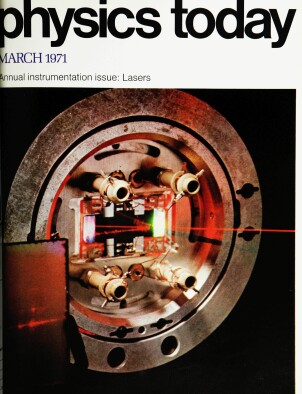Muon‐pair experiment: no new particles
DOI: 10.1063/1.3022617
The Brookhaven AGS, a proton synchrotron, has turned into a useful tool for studying electromagnetic interactions at high energy and momentum transfer. James Christenson, George Hicks, Leon Lederman, Peter Limon, Bernard Pope (Columbia) and Emilio Zavattini (CERN) have studied the massive muon pairs produced when high‐energy protons strike uranium nuclei (Phys. Rev. Lett. 25, 1523, 1970). The experiment sets lower limits on the mass of the heavy photon proposed by T.D. Lee and Gian‐Carlo Wick (Columbia) and on the intermediate vector boson. And the experiment offers a new way of elucidating the scaling and pointlike behavior in the nucleon.
This article is only available in PDF format
